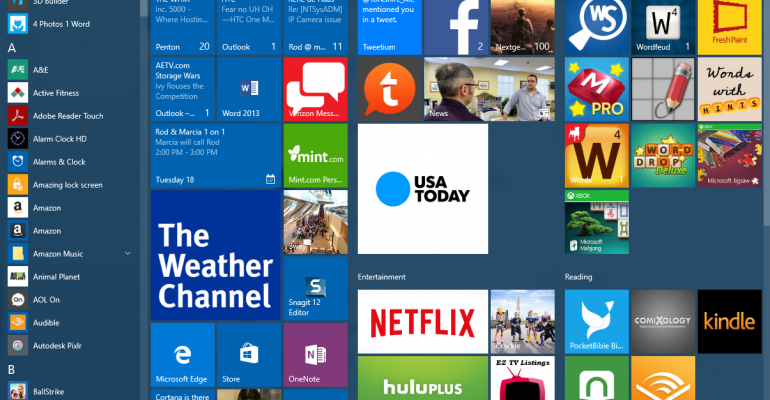In a recent tip, I showed you how to gain access to and launch the various Windows 10 system folders that are hidden in the operating system. Using a special Shell command and a folder name, you can access most any part of the Windows 10 system.
For this How To, you'll actually need to use the previous tip for reference, but only for obtaining the special folder names to use when creating a shortcut to a hidden folder: How To: Use the Windows 10 Shell Command to Open Hidden Folders.
For the example in this How To, I'm going to create a desktop folder that links to the AppsFolder – the part of the Windows 10 Start Menu that contains the All Apps view.
To do this…
-
Right-click on the Windows 10 desktop and choose New > Shortcut
-
When the new shortcut screen displays, enter the Shell command followed by the hidden folder name (as in the previous tip), but precede it by the word Explorer as shown in the image. So, the full command will be: Explorer Shell:AppsFolder
-
Click Next.
-
On the final screen give the new shortcut a name. This can be anything you want, but in my example I chose to stick with the original.
-
Click Finish.
The shortcut creation is complete. And, as you can see in the image example, the new shortcut sits as a folder on the desktop and opens directly to the All Apps listing.
EXTRA
What's especially interesting about creating a folder shortcut to the AppsFolder is that it exposes an additional option for managing installed apps that is not present in its original location in the Windows 10 Start Menu. In the Start Menu, Windows 10 does not allow you to create shortcuts to Universal apps anywhere else in the system. But, when you open the AppsFolder in this manner, a new option is exposed: "Create shortcut"
When you right-click on a Universal app located in this folder view, you can quickly create a shortcut for running the app directly on the Windows 10 desktop.










